EVA Nunez recently was driving for Shuddle, a ride-hailing service for families, when she says she slammed on the brakes to avoid a dog.
The dog was unharmed, but Ms Nunez later was reprimanded by Shuddle, which detected the sudden stop using the accelerometer sensor in her smartphone. In an e-mailed report that details her driving performance each week, the company noted the incident’s location and warned her to brake more gradually.
The same smartphones used by more than a million drivers of ride-hailing services to pick up passengers and collect fares are now tracking when they speed, cut corners, brake suddenly or send texts while at the wheel.
Several companies including Uber Technologies are testing ways to collect this data by uniting sensor readings in phones with geolocation data and traffic patterns.
Technology to track the safety of drivers in commercial fleets has existed for decades, primarily in the trucking industry, in which vehicles contain a box recording things such as braking and speeding. But this field of technology, known as telematics, may finally be on the verge of widespread adoption due partly to smartphones and ride-sharing apps.
San Francisco companies Uber and Lyft, the two largest ride-hailing services in the US, each have held discussions with companies that make telematics software, and are considering implementing it widely in the future, executives at the companies said.
The firms aim to improve safety, extending beyond background checks and passenger feedback. Detailed driving records could help flag reckless behaviour, lower insurance costs and settle accident disputes.
But parsing a driver’s every move also dredges up long-standing legal questions and privacy concerns. For one, Uber and its competitors risk overreaching into the lives of workers they classify as independent contractors, and not employees. That could weaken these companies’ legal arguments that their marketplaces afford workers flexibility and freedom, and hence shouldn’t have to pay health benefits or other expenses covered by an employer.
In November, Uber began quietly tracking the speed, acceleration and braking patterns of drivers in the Houston area. When passengers complained about incompetent drivers, Uber used this data to check for erratic driving relative to the overall average for Houston motorists. If they found evidence of this, the company warned the driver by e-mail to drive more carefully.
An Uber spokeswoman said the company had developed some of its own telemetric technology and tested software made by third parties, but declined to specify names or whether Uber planned to expand driver tracking beyond Houston. The spokeswoman said that while Uber didn’t notify the Houston drivers it was tracking them, its driver agreement always has explained that the company was monitoring location data.
Uber’s most recent driver contract states the company "may monitor, track and share with third parties driver’s geolocation" for safety and security. It doesn’t specifically mention GPS technology or other phone sensors such as accelerometers or gyroscopes used in the recent tests.
Uber and its ride-hailing peers also must contend with the software’s technical limitations. Is it fair to rely on a system that can’t detect a dog crossing the road? "Had I not stepped on (the brakes) harshly, I would have hit the dog," said Ms Nunez, a fashion design student in Redwood City, California, who drives part-time for San Francisco-based Shuddle.
A Shuddle spokeswoman said drivers can explain why incidents occurred and would only face consequences if problems arise frequently or there is "egregious or dangerous behaviour," she said.
Shuddle’s system for identifying bad driving was developed by Zendrive, a San Francisco startup whose software is used by dozens of companies that manage fleets of drivers. Zendrive provides these companies with code to insert into their own apps, which their drivers then download and run on their phones while working.
The technology tracks each trip and constantly rates drivers on a scale of 1 to 100. If they brake suddenly, they could lose a point. Fiddle with the phone during a ride, lose three points. They can gain those points back for each law-abiding and undistracted trip.
Carly Lutz, Shuddle’s senior vice-president of family experience, said giving those scores to drivers in a weekly report has improved driving. The company issues warnings to drivers who are cited for poor driving too often, and in a few instances deactivated drivers for a low Zendrive rating combined with other warnings signs.
Lyft’s chief technology officer, Chris Lambert, said his company has held discussions with telematics technology providers but decided the software was still too early in its development to roll out to its thousands of drivers. "There is a lot of work to be done to make the technology perfect in terms of identifying the events and determining what accurately leads to safer drivers," he said.
Lyft executives were concerned drivers wouldn’t trust this technology because of the potential for false positives and false negatives. For example, a driver who is new to a city and drives too slowly could be rewarded, while someone who swerves to save the life of an animal could be punished.
"Most people want to be better drivers," Mr Lambert said. "The drivers just need to trust that the system is doing that."
Redcap, a Fort Lauderdale, Florida based valet service used by car dealerships for test drives and repairs, only shares Zendrive scores with drivers who are among the best or worst 10%, said CEO David Zwick.
Redcap’s valet drivers "don’t know Zendrive by name but they know we have a capability that allows us to see how they drive," he said. "If we find bad actors, we will deal with them."
More Africa news from The Wall Street Journal
More news from The Wall Street Journal
Premium access to WSJ.com: $1 a week for 12 weeks
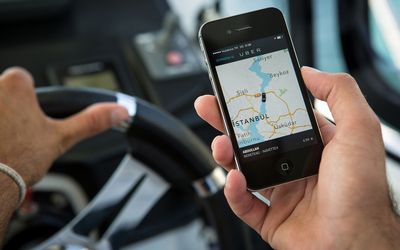
Uber's smartphone app. Photographer: BLOOMBERG/KEREM UZEL
EVA Nunez recently was driving for Shuddle, a ride-hailing service for families, when she says she slammed on the brakes to avoid a dog.
The dog was unharmed, but Ms Nunez later was reprimanded by Shuddle, which detected the sudden stop using the accelerometer sensor in her smartphone. In an e-mailed report that details her driving performance each week, the company noted the incident’s location and warned her to brake more gradually.
The same smartphones used by more than a million drivers of ride-hailing services to pick up passengers and collect fares are now tracking when they speed, cut corners, brake suddenly or send texts while at the wheel.
Several companies including Uber Technologies are testing ways to collect this data by uniting sensor readings in phones with geolocation data and traffic patterns.
Technology to track the safety of drivers in commercial fleets has existed for decades, primarily in the trucking industry, in which vehicles contain a box recording things such as braking and speeding. But this field of technology, known as telematics, may finally be on the verge of widespread adoption due partly to smartphones and ride-sharing apps.
San Francisco companies Uber and Lyft, the two largest ride-hailing services in the US, each have held discussions with companies that make telematics software, and are considering implementing it widely in the future, executives at the companies said.
The firms aim to improve safety, extending beyond background checks and passenger feedback. Detailed driving records could help flag reckless behaviour, lower insurance costs and settle accident disputes.
But parsing a driver’s every move also dredges up long-standing legal questions and privacy concerns. For one, Uber and its competitors risk overreaching into the lives of workers they classify as independent contractors, and not employees. That could weaken these companies’ legal arguments that their marketplaces afford workers flexibility and freedom, and hence shouldn’t have to pay health benefits or other expenses covered by an employer.
In November, Uber began quietly tracking the speed, acceleration and braking patterns of drivers in the Houston area. When passengers complained about incompetent drivers, Uber used this data to check for erratic driving relative to the overall average for Houston motorists. If they found evidence of this, the company warned the driver by e-mail to drive more carefully.
An Uber spokeswoman said the company had developed some of its own telemetric technology and tested software made by third parties, but declined to specify names or whether Uber planned to expand driver tracking beyond Houston. The spokeswoman said that while Uber didn’t notify the Houston drivers it was tracking them, its driver agreement always has explained that the company was monitoring location data.
Uber’s most recent driver contract states the company "may monitor, track and share with third parties driver’s geolocation" for safety and security. It doesn’t specifically mention GPS technology or other phone sensors such as accelerometers or gyroscopes used in the recent tests.
Uber and its ride-hailing peers also must contend with the software’s technical limitations. Is it fair to rely on a system that can’t detect a dog crossing the road? "Had I not stepped on (the brakes) harshly, I would have hit the dog," said Ms Nunez, a fashion design student in Redwood City, California, who drives part-time for San Francisco-based Shuddle.
A Shuddle spokeswoman said drivers can explain why incidents occurred and would only face consequences if problems arise frequently or there is "egregious or dangerous behaviour," she said.
Shuddle’s system for identifying bad driving was developed by Zendrive, a San Francisco startup whose software is used by dozens of companies that manage fleets of drivers. Zendrive provides these companies with code to insert into their own apps, which their drivers then download and run on their phones while working.
The technology tracks each trip and constantly rates drivers on a scale of 1 to 100. If they brake suddenly, they could lose a point. Fiddle with the phone during a ride, lose three points. They can gain those points back for each law-abiding and undistracted trip.
Carly Lutz, Shuddle’s senior vice-president of family experience, said giving those scores to drivers in a weekly report has improved driving. The company issues warnings to drivers who are cited for poor driving too often, and in a few instances deactivated drivers for a low Zendrive rating combined with other warnings signs.
Lyft’s chief technology officer, Chris Lambert, said his company has held discussions with telematics technology providers but decided the software was still too early in its development to roll out to its thousands of drivers. "There is a lot of work to be done to make the technology perfect in terms of identifying the events and determining what accurately leads to safer drivers," he said.
Lyft executives were concerned drivers wouldn’t trust this technology because of the potential for false positives and false negatives. For example, a driver who is new to a city and drives too slowly could be rewarded, while someone who swerves to save the life of an animal could be punished.
"Most people want to be better drivers," Mr Lambert said. "The drivers just need to trust that the system is doing that."
Redcap, a Fort Lauderdale, Florida based valet service used by car dealerships for test drives and repairs, only shares Zendrive scores with drivers who are among the best or worst 10%, said CEO David Zwick.
Redcap’s valet drivers "don’t know Zendrive by name but they know we have a capability that allows us to see how they drive," he said. "If we find bad actors, we will deal with them."
More Africa news from The Wall Street Journal
More news from The Wall Street Journal
Premium access to WSJ.com: $1 a week for 12 weeks


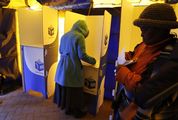

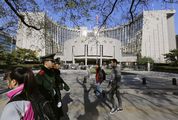
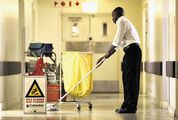
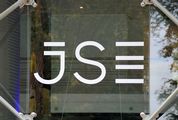

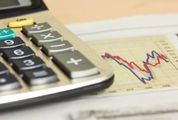
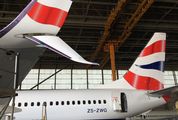











Change: -0.03%
Change: -0.13%
Change: -0.96%
Change: 0.02%
Change: 0.61%
Data supplied by Profile Data
Change: 0.02%
Change: -0.74%
Change: -0.03%
Change: 0.00%
Change: -0.81%
Data supplied by Profile Data
Change: 0.07%
Change: 0.13%
Change: 0.12%
Change: 0.36%
Change: -0.11%
Data supplied by Profile Data
Change: 0.69%
Change: 0.32%
Change: 0.27%
Change: 1.22%
Change: 0.97%
Data supplied by Profile Data